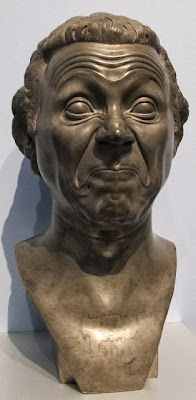2408. Soon the base coat of the plaster was finished
throughout all of the walls of the church and it was time for the masons
to begin laying the finish coat, the one that the artist and his
apprentices would actually paint on.
2409. It so happened one Sunday afternoon that an entire
vat of the plaster was left over when the walls were finished, so
Faldoni, instead of discarding it, brought it to his cell and attempted
to plaster the walls with it. There was a great quantity of plaster, and
it was a very small cell.
2410. What looked like the simplest thing in the world
when he watched the mason doing it, turned out to be nearly impossible
for him, but after several hours he completed the plastering of the back
wall of his cell. This wall measured six feet wide by seven feet high. The top
portion he got nearly smooth, but down toward the floor he made a
terrible mess of it.
2411. At midnight he began the second wall, and at three in the morning he started on the third wall. By morning the cell was finished. The forth wall was perfect even down at the floor, and in the corners. In the corners even a master plasterer has a difficult time of it. Standing there, admiring his work, he rapped his skull three times with his knuckles.




Thanks for the lesson! I wonder if anyone uses this style of painting these days? Something about a fresco! Love the blog Richard ~ keep it coming :)
ReplyDelete